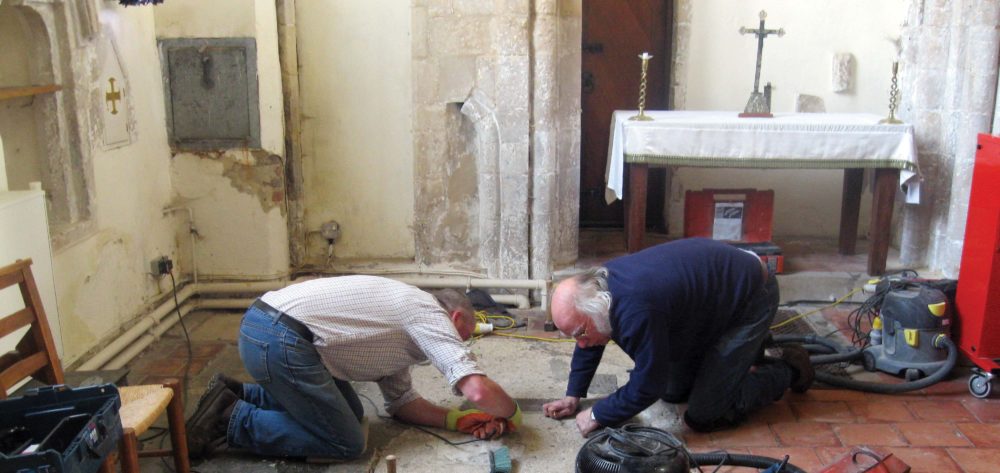
Monumental Brasses
Brasses, set in stone slabs, were a form of funerary monument typically employed from the late 13th to the 19th centuries, peaking in popularity in England between about 1300 and 1650.
They present several conservation challenges, often unique to this type of monument. Being generally set in ledger slabs in church floors they can be subject to wear and tear from foot traffic and can be affected by moisture in the surrounding stone. They are typically set in pitch inlay with copper alloy rivets – which can fail leaving brasses vulnerable to theft. Bat excreta can also present challenges. Monumental brass conservation is thus a specialist field in its own right and for many years its leading conservator has been William Lack ACR. From 2014 until his untimely passing away in 2019 William worked closely with Skillingtons. One of our conservators, Simon Nadin, spent several years working alongside William, learning the craft, and we have now set up our own brass conservation studio with William's help.
Trading as Skillington Lack, we are now regularly undertake commissions for monumental brass conservation.
Latest News
- Skillingtons Training Course in the Architectural Conservation of Archaeological Sites in North Macedonia, 10-24 May 2025
- Skillingtons Project Shortlisted as 2025 AABC Conservation Awards: Regional Finalist!
- The Monson Monument (1625) by Nicholas Stone at South Carlton, Lincolnshire
- Londonthorpe WW2 Firing Wall (July 2024)
- Theodosian Palace Conservation Project: Stobi, North Macedonia

